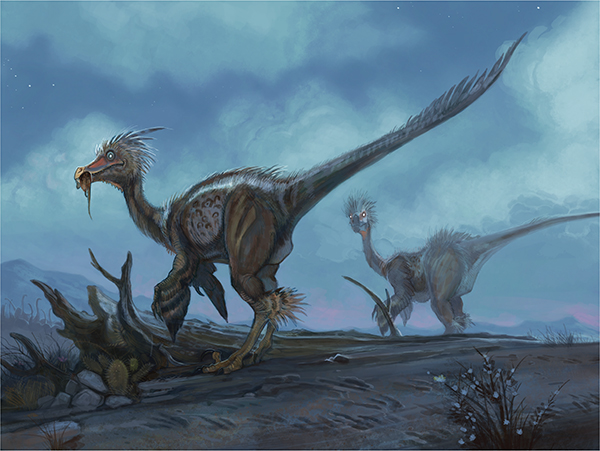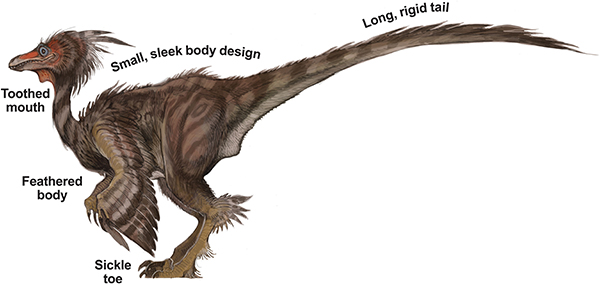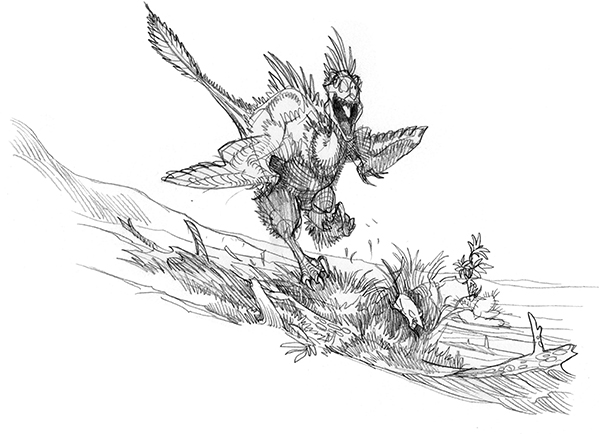

PRONUNCIATION | veh-loss-ih-RAP-tor
SPECIES | Velociraptor mongoliensis
NAME | Swift Seizer
FAMILY | Dromaeosauridae
PERIOD | Cretaceous
DIET | Carnivore
SIZE | 6 feet (2m)
YEAR DISCOVERED | 1942
Velociraptor and its cousin the deinonychus are species of the famous sickle-toed bipedal theropods known as dromaeosaurus. These feathered, fast predators have been the stars of books and films because of their deadly claws and vicious hunting skills.
Rigid tendons in the long, thin tail are thought to have acted as a counterbalancing rudder to keep the raptor upright as it made quick turns, much like a modern-day cheetah. Fossil remains of several velociraptors have been found together, leading paleontologists to surmise they were pack hunters, swarming their prey as a group with their vicious claws.
The late Cretaceous period was a time of titanic dinosaurs like T-rex, apatosaurus and hadrosaurs. The velociraptor was a fascinating hybrid that straddled the dinosaur tradition of the past and the bird designs of the future. Fast, agile and nocturnal, it had feathers for insulation and night vision. Velociraptors are thought to have hunted new species of rodents and mammals, making them one of the last of the great evolutions of the dinosauria class before extinction. Without the disappearance of dinosaurs 65 million years ago, it is possible this successful design of dinosaur may have continued into the future.

Only reaching about 6 feet (2m) long from tip to tail, a velociraptor would have had a core not much larger than your average holiday turkey. Its long, streamlined body is understood by fossil evidence to have been covered with a variety of feathers and its large eyes and equally large brain have made some paleontologists wonder if the velociraptor was perhaps a nocturnal hunter. (See also coelophysis and troodon.)

Although romanticized as pack hunters working in groups to bring down large prey, the velociraptor more than likely survived on lizards and small rodents. The protoceratops was probably as big a prey as it got. The feathers and tail of the velociraptor were believed to be a stabilizing element for hunting small prey in the desert.

Like birds, raptors were likely able to vocalize in complex patterns to communicate with other members of the flock.